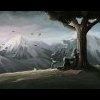Stupas, Inscription Indicate Buddha's Visit
-
Recently Browsing 0 members
- No registered users viewing this page.
-
Topics
-
-
Popular Contributors
-
-
Latest posts...
-
26
-
26
Trump just made an idiot move
Yesterday, a federal judge dismissed former President Trump’s $50 million lawsuit against journalist Bob Woodward and his publisher. How stupid to launch a lawsuit unless you know you are in the right and going to win????? -
253
SIDS - Sudden Infant Death Syndrome - Is Caused By Vaccines
God, although some might disagree he exists, likely has put everything we need here to control the diseases that were all put here, as a learning tool. Who yet knows? Is the earth going to last millions of more years or end soon as some predict? It it was to last a very long time, it could be thought that he really is watching us to see if we can learn how to eradicate the many diseases here. Or it will not last longer, that of course we aren't supposed to live forever, and he's just watching some do their research to try and help others with what they've come up with. Vaccines and medicines. Our destiny isn't to live forever. This is a short part of our existence,nothing compared to the next level of forever. -
26
Trump just made an idiot move
@Cameroni when will you stop writing nonsense? The idea of all of Ukraine was published within a few days of the original invasion...and then quickly removed when the ''SMO'' didn't go to plan. Are you yet another of those narcissists who pretend that everything they assert is correct? Why not wait to see what happens, rather than to pretend that you know something? Remember that Trump was accused of raping a 13 year old girl, along with Epstein. Do any of you still have sight of your moral compass? -
253
SIDS - Sudden Infant Death Syndrome - Is Caused By Vaccines
<snip> The WHO!? '',,,world renowned health site.'' Joke of the year. -
24
Dr. Joshua Guetzkow: Catastrophic Israeli Fertility Data
She world wide known as a VERY strange Professor, maybe the head of your conspiracy group. Read here: The Strange Case of Dr. Cahill and Ms. Hyde | Office for Science and Society - McGill University https://share.google/jawEIy1RhrJNKfhbB Not a serious source. As Always mentioned by you.
-
-
Popular in The Pub






.thumb.jpeg.d2d19a66404642fd9ff62d6262fd153e.jpeg)







Recommended Posts
Create an account or sign in to comment
You need to be a member in order to leave a comment
Create an account
Sign up for a new account in our community. It's easy!
Register a new accountSign in
Already have an account? Sign in here.
Sign In Now